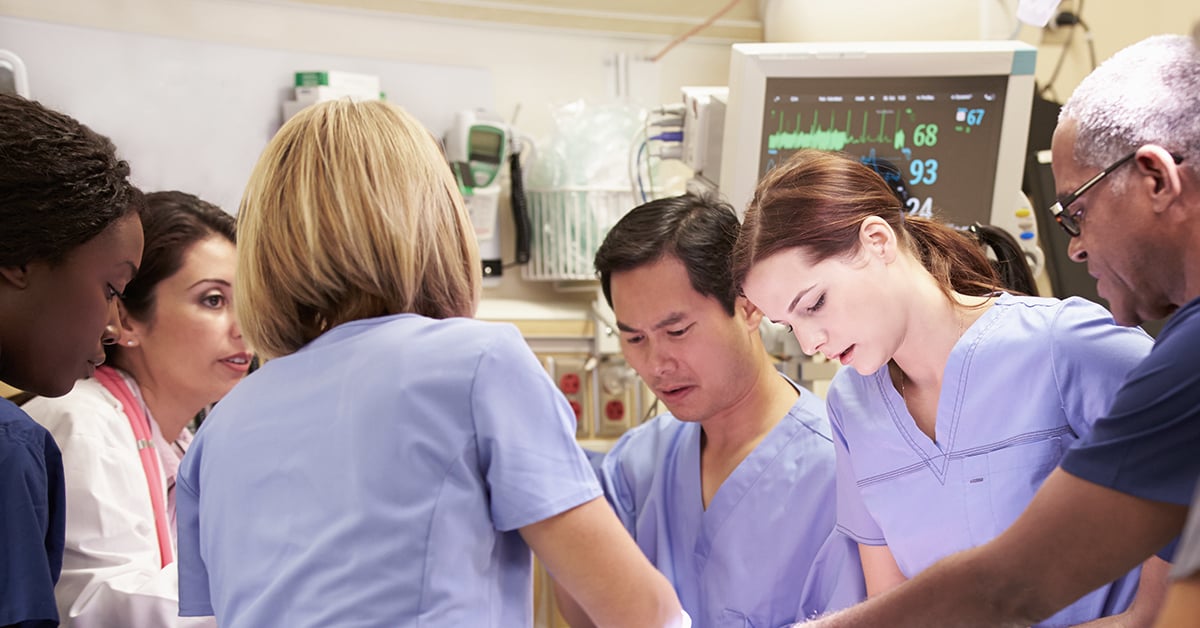The Ins and Outs of the EM Rotation

Last updated: Nov 5, 2020
For students hoping to go into Emergency Medicine, doing a sub-internship at your home program is a must. For all other students, the EM rotation is a great way for you to hone your clinical skills and practice for the Step 2 CS exam since you will be working with dozens of new patient cases every shift.
How to Succeed in Your Emergency Medicine Sub-Internship
At my medical school, 4th-year students on the Emergency Medicine sub-internship work 15 eight-hour shifts over four weeks: 6 am-2 pm, 2 pm-10 pm, and 10 pm-6 am. On each shift, the sub-internship is assigned to work with one of the senior residents. Additionally, every week, students have the opportunity to attend a resident conference and a dedicated lecture led by the clerkship director. However, even with such a full schedule, there are definite steps you can take to succeed in EM.
Master Your Patient Interviews and Presentations
If nothing else, a concise and pertinent patient presentation is crucial for success in your Emergency Medicine sub-internship. With each patient I saw, the residents and attendings were evaluating me based on my ability to create a broad differential diagnosis, hone in on a potential diagnosis, and, most importantly, rule in/out life-threatening conditions. My core clinical rotations helped me develop my SOAP presentation and physical exam skills. To help me prepare for presentations in the Emergency Department, I found some helpful example videos and read this paper to help organize my presentations.
Reassessments Are Helpful for the Team
After giving your oral presentation and discussing the diagnostics and treatment plan with your resident and attending, the most helpful thing that a medical student can do is reassess the patient. Checking the EMR regularly to see if CT or CBC results are back is a good way to keep things moving and is helpful for your team, which may be juggling a dozen patients at one time. Being proactive and visiting your patients ensures that their care is progressing efficiently and appropriately.
To give a simple example, during one of my shifts, I had a patient come into the ER for an acute allergic reaction to cashews. By popping my head in periodically and saying “hello,” I made sure that his urticaria was improving and that vitals were stable (both of which are useful updates for discharge), all the while building a great rapport with him.
Emergency Medicine Resources
Finding board-style questions for Emergency medicine isn’t as straightforward as it may seem, and some specialties may come with their own official exams. At my institution, for example, students on the Emergency Medicine acting internship take a Society of Academic Emergency Medicine (SAEM) Exam at the end of the rotation. And so, it goes without saying—especially for students hoping to go into EM—that doing well on the standardized exams will certainly help you on the rotation and for your Standardized Letter of Evaluation (SLOE). Below are the resources I thought were most helpful:
- Rosh Review – Coupled with well-made graphics, this 300-question Qbank was fantastic for giving me a framework of the chief complaints that come through the Emergency Room. It covers most of the on-the-spot questions that I was asked by residents and attendings during my shifts. Pro tip: students who sign up for Emergency Medicine Residents’ Association (EMRA) receive a discount on this question bank.
- AMBOSS Emergency Medicine Qbank – Once I finished the Rosh Review Qbank, I found the AMBOSS Emergency Medicine questions to be a great supplement. It’s always good to test your knowledge with new Qbanks, and AMBOSS is one of the few places with dedicated EM questions. Take advantage of this!
- EM Clerkship Podcast – On my downtime, I really enjoyed listening to this podcast by Zack Olsen, M.D. The podcast adds new episodes every week, and Dr. Olsen provides insider tips to help succeed on your away rotations in a very laid-back manner. Also, there is a helpful NBME review series on the podcast, created by a fellow medical student (Michael Estephan from the University of Rochester).
- Emergency Medicine Secrets – This was the closest thing to a pocket textbook that I could find. The book is organized by chief complaint and formatted in question-answer style. If you need something to review while on the rotation, I thought this was the most reasonable book to use.
- Tintinalli’s Emergency Medicine Manual – This text is regarded as one of the best emergency medicine resources. Although it was definitely useful, it certainly was not a “light” read (there are 1000+ pages!). My recommendation is to use this book primarily as a reference throughout your rotation.
- AMBOSS Knowledge App / Quick EM / MDCalc (iPhone/Android Applications) – Similar to the Emergency Medicine textbook, these three applications are useful resources that are organized by the patient’s chief complaint to manage any question that you might be asked.
What Matters Most
Clinical grades are an important part of the residency match process and, as medical students, we all have the goal to achieve the best scores we can. My general recommendation is to keep the focus on the patient and not on your evaluations. Once you have the right focus, you will invariably end up doing well. Enjoy your shifts!
Get on-the-go medical info with the AMBOSS Knowledge app. It works online and offline so you'll have access to the answers you need during the EM rotation and every clerkship.

Andrew Luo is a MD/MBA student at Penn State College of Medicine and Columbia Business School. In his free time, he is either working on his golf swing or watching stand-up comedy specials on Netflix. You can find him as @andrewdluo on Twitter.
